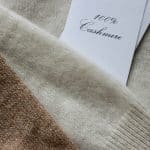In a world where sustainability has become a resonating buzzword, the fashion industry is seeing a paradigm shift. The environmental harm caused by traditional production practices is now a key concern for consumers globally. They are seeking alternatives, and brands are listening. In this context, we’ll take a deep dive into how a single eco-friendly fashion brand has managed to disrupt the industry and set new standards.
The Rise of the Conscious Consumer
The shift towards sustainable fashion has been fuelled by the rise of the conscious consumer. More than ever, people are conscious about the impact of their purchases, not just on their wallets, but on the environment and society at large.
Additional reading : What Drove the Growth of a Small Software Company into a Tech Giant?
As consumers, your choices hold immense power to influence brands. Your shift in preference towards eco-friendly clothing has forced the fashion industry to reconsider their production chain. Consumers are no longer satisfied with just the end product; they demand transparency about the materials used, the production process, and the social impact of the brand.
The rise in conscious consumerism has resulted in brands investing in sustainable practices, using organic materials, and ensuring that their operations are eco-friendly. But how has one brand managed to not just adapt to this shift, but also set new industry standards? Let’s delve further to find out.
Also read : What Factors Contributed to a Local Craft Brewery’s Expansion Nationwide?
Leading the Charge: The Role of the Sustainable Fashion Brand
In the midst of this evolving industry landscape, one brand stands out for having led the charge towards sustainability: the eco-friendly fashion brand. It has not only embraced sustainability but has made it central to its business model.
The brand has gone beyond using organic materials to produce its clothing line. It has made it a mission to ensure that every aspect of its production chain aligns with environmental and social norms. The brand’s commitment to sustainability is apparent in its choice of suppliers, its production practices, and even its packaging process, all of which prioritize eco-friendliness.
Setting New Standards: The Impact on the Industry
The success of the eco-friendly fashion brand has had a profound impact on the fashion industry. It has set new standards that other brands are now striving to meet.
The brand has proven that it is possible to create fashionable products without causing environmental harm. It has shown that companies can prioritize both profitability and sustainability. This has resulted in a wave of change in the industry, with other brands following suit and incorporating eco-friendly practices into their operations.
The brand’s success has also shown that consumers are ready to embrace sustainable fashion. It has proven that consumers are not just interested in sustainability, but they are also willing to pay for it. This has shifted the industry’s perception of sustainable fashion, from being a niche market to a substantial, growing market segment.
The Ripple Effect: A More Sustainable Future
The success of the eco-friendly fashion brand has had a ripple effect on the industry. Other brands are not just following suit, but they are also innovating in their own ways to meet the growing consumer demand for sustainable fashion.
This ripple effect is not just limited to the fashion industry. It is also inspiring companies in other sectors to prioritize sustainability. It is driving a global shift towards more sustainable business practices, thereby reducing the overall environmental impact of the business world.
The eco-friendly fashion brand’s success has shown that sustainability and profitability are not mutually exclusive. It has set a precedent that other companies, regardless of the sector they operate in, can follow.
Key Takeaways: The Power to Influence Change
The journey of the eco-friendly fashion brand shows the power of consumers to influence change. Your choices as consumers can push brands to adopt more sustainable practices, leading to a more sustainable future for all.
The brand’s success also highlights the role of companies in driving sustainability. Companies have a responsibility to prioritize sustainability, not just for the sake of profitability, but also for the long-term survival of the planet.
As consumers and companies, we all have a part to play in promoting sustainability. The actions we take today will determine the kind of world we live in tomorrow.
Pioneering Practices: A Journey of Innovation
The eco-friendly fashion brand has not merely jumped on the bandwagon of sustainability, but instead, has been a pioneer in forging new paths in sustainable practices. The brand has made waves in the industry by embracing innovative solutions such as the circular economy model, using raw materials that are sustainably sourced, and running operations that are carbon neutral.
The brand made significant investments to transition from the traditional linear fashion model of “take-make-dispose” to a more sustainable circular model. This involves the design of durable products, the use of sustainable materials such as organic cotton, and the creation of systems for the return and recycling of used garments.
To ensure the sustainability of its supply chain, the brand has partnerships with fair trade suppliers. They also prioritize sourcing raw materials from manufacturers that comply with environmental and social standards. This includes organic cotton farmers in the United States, who use sustainable farming practices that minimize environmental impact while promoting biodiversity.
Moreover, with carbon neutrality as an ultimate goal, they are also striving to reduce carbon emissions across all operations. This spans from manufacturing processes to logistics and even extends to their retail outlets. The brand has made energy efficiency a cornerstone policy, investing in renewable energy sources, and has initiatives to offset any unavoidable emissions.
Conclusion: Redefining Fashion, Inspiring Change
The story of the eco-friendly fashion brand’s success is transformative for the global fashion industry. It has shown that fashion brands can prioritize sustainability without compromising on style or profitability. More importantly, it has inspired other brands, across industries, to consider their environmental impact and strive for sustainable practices.
By embracing principles of sustainability, from their supply chains to their marketing efforts and even their corporate culture, they have redefined the norms within the fashion industry. No longer is sustainability seen as a fad, but rather, it is recognized as a pressing necessity.
The brand’s achievement in marrying sustainability and fashion has been a beacon of inspiration for other brands, in and beyond the fast fashion sector. It has ignited the spark of innovation, prompting brands to explore sustainable materials, fair trade partnerships, and circular economy models.
The eco-friendly brand’s narrative underscores the role every consumer plays in this shift. Every purchase, every preference for sustainable fashion, brings us a step closer to a more sustainable future. It is a call to action to every consumer and every brand worldwide: the choice for sustainability is not just about saving our planet, it’s about preserving our future.











